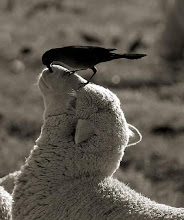
Zipangu Fest & Kinema Nippon presents: NIPPON re-read ft. films by Takahiko Iimura, Takashi Makino, Yoi Suzuki, Daisuke Nose, Stom Sogo, Tomonari Nishikawa, Eriko Sonoda, Toshio Matsumoto, Shiho Kano and Shinkan Tamaki + Bo Ningen soundtracks 'Cat Soup'
Tuesday 22nd November 2011
Door Times : 7.30pm
Tickets : £5
Zipangu Fest returns with a strong experimental film programme for 2011, thanks to curator Julian Ross. Come and enjoy a fine spectrum of experimental moving image works from Japan, for a good cause! All proceeds from this screening will go towards Japan disaster relief via Japanisch-Deutsches Zentrum Berlin.
The films in this two-part programme from Kinema Nippon (curated by Aily Nash and Nine Yamamoto-Masson) range from late 60s to contemporary works. Although varying greatly in their formal and aesthetic concerns, the works all rigorously reexamine the everyday through their respective experiments and innovations in their medium.
In addition to the film programme outlined below, BO NINGEN - London's premier noise rock band - will perform their live soundtrack to 'Cat Soup' - a wonderfully surreal and deceptively simple landmark in experimental animation inspired by the manga artist Nekojiru. Tatsuo Sato pays homage with an explosion of colours and twisted deliriums that follow Nyatta's series of eccentric encounters as he journeys in attempt to retrieve his sister's half-soul.
The soundtrack was specially commissioned by the Branchage Film Festival.
This screening is part of the Zipangu Fest 2011 main festival (18-24 November 2011).
PROGRAMME I - 68min
Abstractions of the mundane are seen in the graphic films in Programme I, which deal directly with the materiality of their medium rather than focusing on a visual referent. In White Calligraphy Re-Read (1967), Takahiko Iimura activates the Japanese characters of the Kojiki, the earliest Japanese historical chronicle, by deconstructing text into its constitutive graphic ciphers. These works, including Lika (2007) by Stom Sogo, and Still in Cosmos (2009) by Takashi Makino, direct the attention of the viewer to the pictorial, emphasizing more painterly concerns, digital and celluloid textures, the visceral correlation of sound and image, and of flatness versus representational depth.
White Calligraphy Re-Read Dir. Takahiko Iimura 1967 12min 16mm
In White Calligraphy Re-Read, the Japanese characters of the Kojiki (the oldest known written record of Japan, from the eighth century) are scratched directly onto dark leader, one frame at a time. When projected, it is too fast to read, rather it appears as an abstract line animation. It recalls the automatic writing of the Surrealists, as the characters become lines that rapidly explode like fireworks.
Still in Cosmos Dir. Takashi Makino 2009 18min 35mm/16mm/video (music by Jim O'Rourke)
What may at first appear like an abstract film of hypnotizing visual noise slowly deploys its singular captivating force as it reveals itself as a dense layering of light traces and images. Still in Cosmos depicts Makino's conception of what lies in the cosmos beyond our imagination. Multiple exposure and single frame images are compounded, rendering the myriad and infinite images that make up the chaos of the cosmos.
See-Sea-Saw Dir. Yoi Suzuki, Naoto Kawamoto, Manami Tanaka, Takehiro Nakamura, Kengo Yagawa, Gerelyn Rhine R Bernardino, Adi Bersales, Jacques Palami, Kimberly Batac Accoreza, Marie Joseph Foz Baquiran 2010 10min 16mm
See-Sea-Saw is the result of a collaborative project between four students from Tama Art University's Department of Moving Images and Performing Arts and five students at the University of the Philippines Film Institute, under the supervision of film professor Yoi Suzuki. Highly collaborative and experimental in essence, it is a singular portrait of two places and two sentiments, Japan and the Philippines. Following the leitmotifs of hands, water, and a radiant sun, the images and soundtrack incorporate the bodies of the filmmakers, their language, and field recordings from Manila Bay and Tokyo Bay. Intuitive processes (cine-calligraphy and direct painting on hand processed 16mm film) highlight the characteristic materiality of film while the work's vibrant imagery and soundtrack examine the spirited nature of collaboration, communication, and creation across cultures.
Down the Line Dir. Daisuke Nose 2000 2:30min 16mm
A short work that reveals the physicality of the film medium, and playfully highlights its idiosyncratic imperfections.
Lika (Licre) Dir. Stom Sogo 2007 26min video
Lika is a glimpse into the mesmerizing world of Stom Sogo: a lush kaleidoscope of manipulated video fragments set to an entrancing electronic score. Lika subverts common signifying processes as it weaves rhythmic variations of radiant textures into a captivating immersive experience, equally mysterious and seductive in its masterful play with degrees of abstraction.
PROGRAMME II - 67min
The works in Programme II offer a poetic investigation into the fragmentary experience of the quotidian by eschewing narrative and rendering cultural images and references to unveil the uncanny within the familiar. Tomonari Nishikawa's in-camera manipulation of bustling metro hubs in Shibuya-Tokyo and Tokyo-Ebisu (2010), as well as Shiho Kano's pensive meditations on quintessential Japanese subjects form a counterpoint to Toshio Matsumoto's split-screen filmic hallucination of the late-60s underground, For the Damaged Right Eye (1969).
Shibuya-Tokyo Dir. Tomonari Nishikawa 2010 10min 16mm
Tomonari Nishikawa's Tokyo–Ebisu is an entrancing in-camera patchwork constructed from multiple viewpoints from the platforms of Tokyo's busiest rail line, the Yamanote, which runs as a loop. At each of its twenty-nine stations, following a clockwise route, Nishikawa recorded scenes of busting commotion distilled by his camera magic into spectral apparitions of trains, people, and advertising billboards, creating an unusual portrait of a mega-city.
Tokyo-Ebisu Dir. Tomonari Nishikawa 2010 5min 16mm
Tokyo-Ebisu shows the views from the platforms of ten stations on the Yamanote line, from Tokyo station to Ebisu station clockwise. The in-camera visual effects and the layered soundtrack enhance the character of each location.
Kagi Dir. Eriko Sonoda 2005 6:30min 8mm
Quietly complex, Kagi (the Key) uses stop-motion animation in a two-fold manner: many life-sized photographs are affixed to the wall of a domestic space through which Sonoda moves, these are recorded frame-by-frame, simultaneously rendering multiple temporal and physical dimensions.
For the Damaged Right Eye Dir. Toshio Matsumoto 1969 12min 16mm
For The Damaged Right Eye was made at the same time as Toshio Matsumoto's wildly experimental and critically acclaimed feature film Funeral Parade of Roses. It features some of the same footage, presented in a split-screen format. Across the screen, juxtaposed images compete with each other or provide clues to one another. Formally, it demands active viewership as it challenges habitual structures of perception. In a fast-paced collage of rapid edits and sounds it cinematically renders the built-up tension and latent contradictions underlying the late-60s counter-culture in Japan, addressing highly charged themes of gender, sexuality, violence, and activism.
Shinonome Omogo Ishizuchi Dir. Shiho Kano 2008 15min video
Kano's contemplative piece on early Japanese filmmaker Mansaku Itami was inspired by a simple landscape photograph taken by him while traveling. Shinonome Omogo
Ishizuchi is Kano's imaginative interpretation of what Itami might have seen on his journey. Layering his original film footage with her own from the present, she creates a space in which images from multiple eras resonate with one another rendering a lyrical exploration of nostalgia.
One Record on December Dir. Shinkan Tamaki 2007 6:30min 16mm
One Record on December seems to contain a virus that affects the image: disorientating imagery, fragmentary 16mm shots of crowds of walking people, printed in reverse black and white, grow more and more uncanny with the increasing intensity of formal alienation from their original referent. Visible spots and stripes add to the unrest. Slowly, cracks and tears appear, until eventually the emulsion completely flakes off. What remains is blank film, and silence.
Time for Radio Exercise Dir. Daisuke Nose 2003 11:30min video
In Time for Radio Exercise, Nose deconstructs the quintessential quotidian activity—exercise—and rhythmically edits the course of a year into the frame of a single ten-minute routine, collapsing time by way of seasonal cues. Nose highlights the presence of a single moment repeated throughout a year, and a year seen through a single moment.
Kinema Nippon website
http://www.kinemanippon.org/
Zipangu Festival website
http://zipangufest.com/events/2011/nippon-re-read-radical-fragments-and-abstractions-from-japan-i-ii






Nessun commento:
Posta un commento